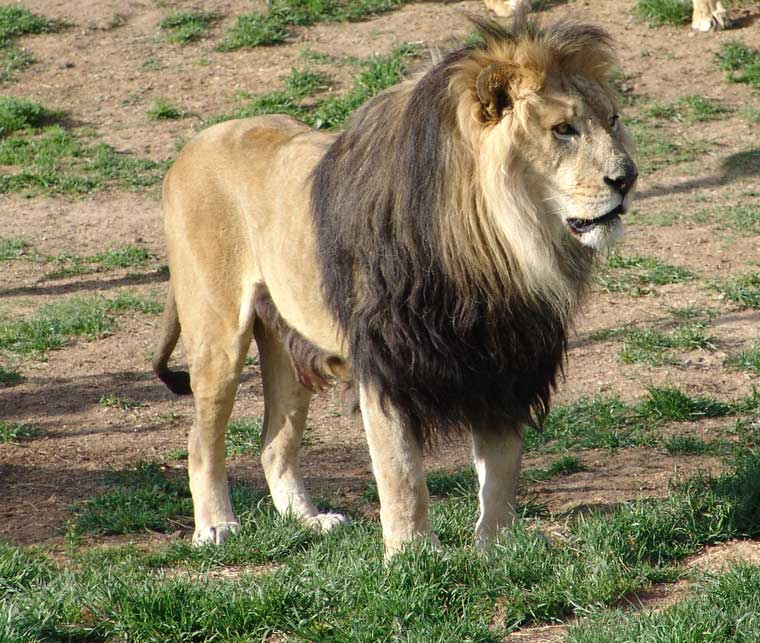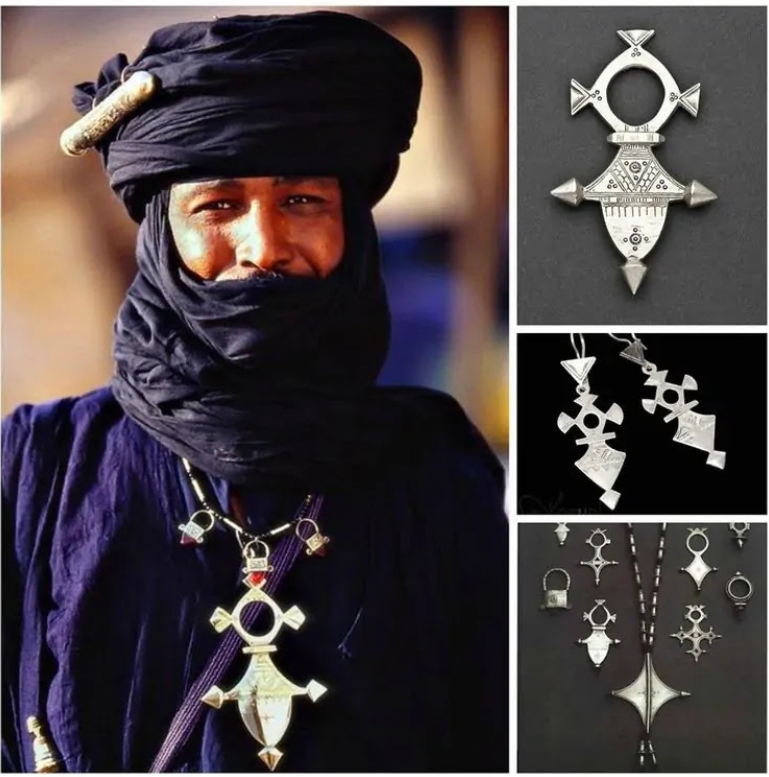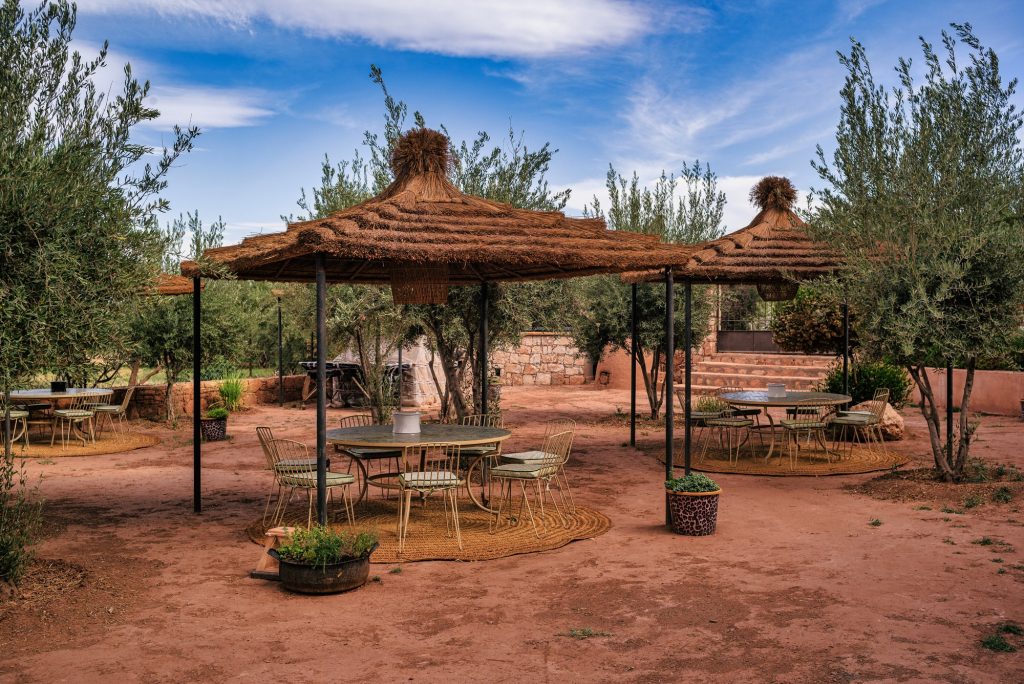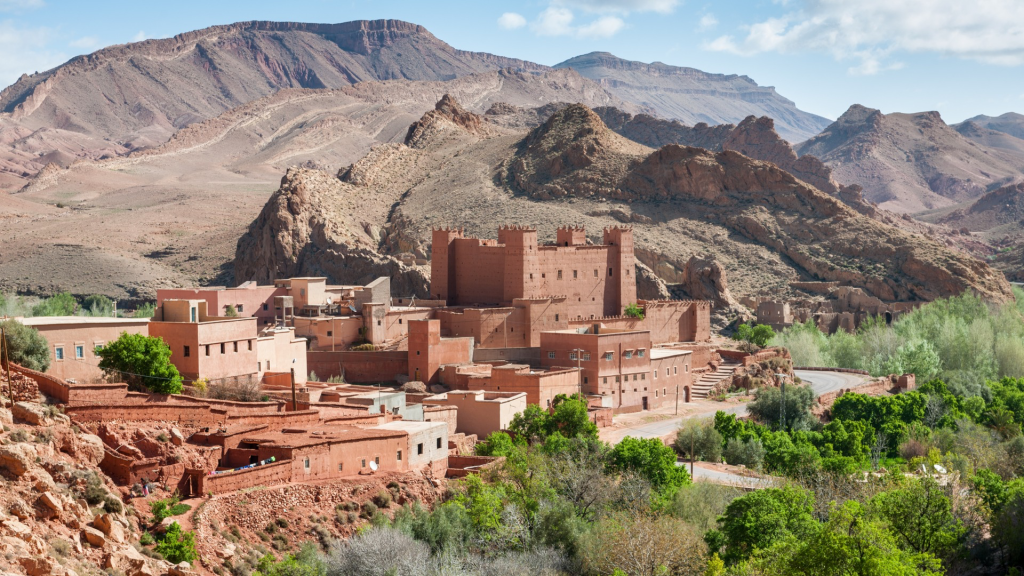Between History and Mythology
Many people are familiar with the "Southern Cross", the famous emblem of Targu culture. But where does it come from and what does it mean?
There are more than twenty varieties of this cross, and the best known is the Agadez cross. It can be found in the shop windows of every Berber silverware dealer, whether in the north or south, so well known is it to all, and so popular is it throughout Tamazgha. But where it is most worn is undoubtedly in the Ahaggar among the Tuaregs. And there are many variations that only specialists can distinguish.
The Southern Cross is often made of silver. But it can also be found in copper, aluminium or stone. Gold is very rare. In fact, it all depends on the oasis in which it is produced. Each has its own particular way of designing it, and depending on its resources, uses a different medium.
Origins :
When the word "cross" is used, some people tend to confuse it with the cross of Jesus, thinking that it is a variant of the latter, dating back to the Christian era in North Africa. But this is not the case. This cross goes back much further in history. It symbolises a Phoenician divinity imported around the tenth century BC by Phoenician merchants before being imposed by Carthaginian culture. Her name is Tanit. Hence its name in Tamacheq, Tanayilt. This cross is mainly worn by women, but it can also be found hanging from the neck of a camel, as a good luck charm.
Who is Tanit?
Tanit is a deity of Chaldean (Iraqi) origin, widespread throughout the Middle East under various names: Astarte, Ishtar or Inanna. The Old Testament in the Bible constantly denounces her and condemns the worship she is given. She is considered a goddess of fertility, love and sexuality. She was Aphrodite to the Greeks and Venus to the Romans. Later, Catholics confused her with the Virgin Mary under the name of Queen of Heaven, a name she already bore in Mesopotamia.
The cult of Tanit was characterised by human sacrifice. In the Bible, the prophets unreservedly condemned this cult, which consisted of "making children pass through the fire". In fact, wealthy families offered one of their children as a sacrifice to this divinity so that Tanit could preserve and develop their prosperity. She was supposed to guarantee them security and fertility, promising to replace the sacrificed child with an abundant progeny.
This practice gradually disappeared, mainly because of the horror felt by the people during the great public festivals when they put their own children to the stake. And it was in Carthage that this practice lasted the longest. It was when it was taken by Roman soldiers that this practice, considered barbaric, was banned. But it was kept secret on a more or less regular basis in areas not occupied by the Romans, hence the development of the Tanit Cross in the south. The official sacrifice of children in fact ceased, but was subtly replaced for a long time by a high infant mortality rate, due to the fact that people did little to protect newborns, relying on this deity to take care of them or take them back. The development of medicine, especially in rural areas and in the Sahara desert, has greatly reduced this mortality rate. In Tunisia, the grand prize for cinema is the Tanit d'Or, and the shipping company has named one of its most prestigious liners after the Tanit.
Form and symbol.
Over time, the symbol of Tanit has evolved. Relatively forgotten in the Middle East, it was developed in Europe under the names of Aphrodite in Greece and Venus in Roman times. The Anglo-Saxons wanted to symbolise life through this goddess, and celebrated her under the name Easter, which later became the name of Passover. While some call this festival Passover, which is the exact translation of the Hebrew word Pesach, others continue to call it Easter, without really knowing why. Just as they transformed the pagan festival of Saturnalia into Christmas, even though it has nothing to do with the birth of Jesus.
Today, in the West, Aphrodite and Venus symbolise voluptuousness, sensuality and physical love. The cosmetics industry uses and abuses them in all their forms. In Algeria, there is also a cosmetics laboratory called 'Venus'.
Physically, the shape of the Tanit cross includes the four cardinal points, and is supposed to symbolise the world in all its dimensions. The Targui is nomadic and free to move and travel in all directions. Hence the presence of this symbol under the neck of the camel. But at the top, there is a kind of circle which, if you look at the whole object, suggests a woman's body. So sexuality and fertility are not far from this pendant.
There are many legends among the Tuareg that tell the story of this cross, all linked to a love story. To let a young woman know that a man wanted to marry her, he would discreetly send her a jewel in the shape of Tanit. For a long time, it was thought that this deity was a Berber called Tani, but there is no proof of this. If love is indeed a Berber value, the symbol of Tanit is very foreign to Tamazgha. Only the Tuareg continue to use it, even if there are similarities with other symbols used by Egyptians, Senegalese and Ghanaians.








